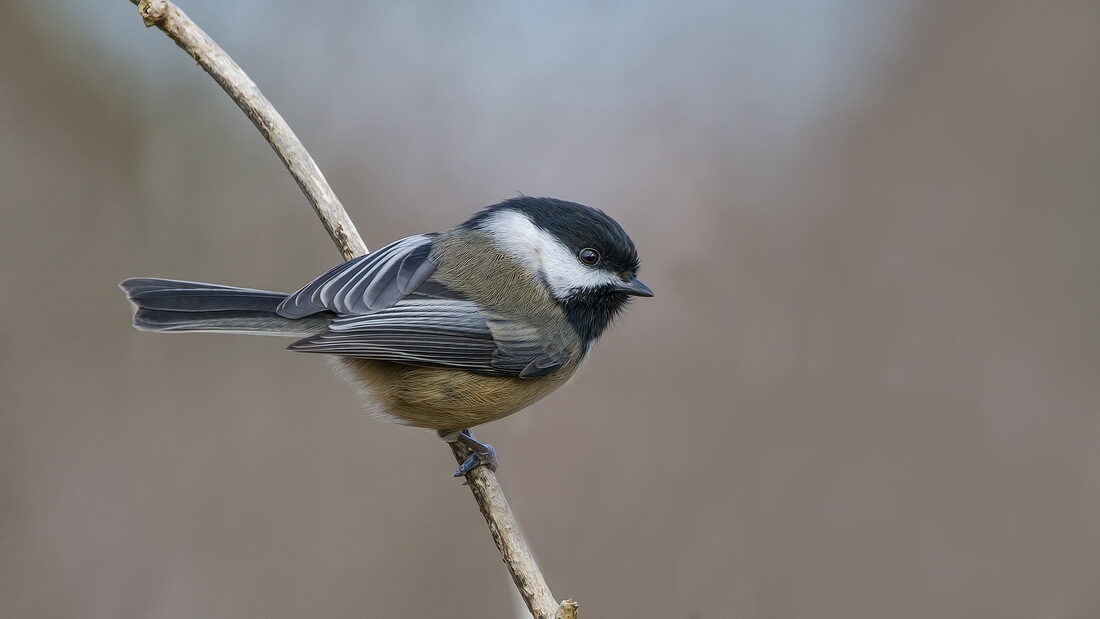A Half-Ounce Black-Capped Chickadee Is A Winter Heavyweight
by Jennifer Dolese
Broadcast 9.27 & 9.30.2020 and 9.29 & 10.2.2020

Photo by Elaine R. Wilson, naturespicsonline.com, CC 3.0.
Listen:
This summer, while watching White-crowned Sparrows, Pine Siskins, and Cassin’s Finches feeding on the sunflower seeds we’d scattered on the rail of the cabin porch, I had the experience of a Black-capped Chickadee eating out of my hand as I sat, statue-like, palm out, lifted and flat.
Chickadees can become quite tame, and they are frequent users of bird feeders. As fall arrives and sparrows and siskins fly south, you’ll still notice chickadees flying about, voicing their friendly call.
The Black-capped Chickadee is a year-round resident of Montana. In winter, it flocks in groups of about twelve birds. Some of the birds who are of low rank and without a mate will often switch flocks.
Chickadees will readily make use of your bird feeder during the long winter months. However, you don’t have to feel as though their life depends on you. The research that’s been done on chickadee feeding habits in winter has found that only 20 to 25 percent of their food comes from bird feeders.
Mostly, they feed on insects and seeds found in the woods and grasslands. When the temperature drops under 10 degrees, however, the survival rate of chickadees doubles if they do have access to a bird feeder. The chickadee only weighs half an ounce, and in cold temperatures must eat 20 times as much as they do in the summer.
We can enjoy seeing this little black-capped bird in the months to come, and in the days when it’s really cold this winter, remember the resident chickadee flock and add some sunflower seeds to your bird feeder.
Every week since 1991, Field Notes has inquired about Montana’s natural history. Field Notes are written by naturalists, students, and listeners about the puzzle-tree bark, eagle talons, woolly aphids, and giant puffballs of Western, Central and Southwestern Montana and aired weekly on Montana Public Radio.
Click here to read and listen to more Field Notes. Field Notes is available as a podcast! Subscribe on iTunes, Google Play, or wherever you listen to podcasts.
Interested in writing a Field Note? Contact Allison De Jong, Field Notes editor, at adejong [at] montananaturalist [dot] org or 406.327.0405.
Want to learn more about our programs as well as fun natural history facts and seasonal phenology? Sign up for our e-newsletter! You can also become a member and get discounts on our programs as well as free reciprocal admission to 300+ science centers in North America!












